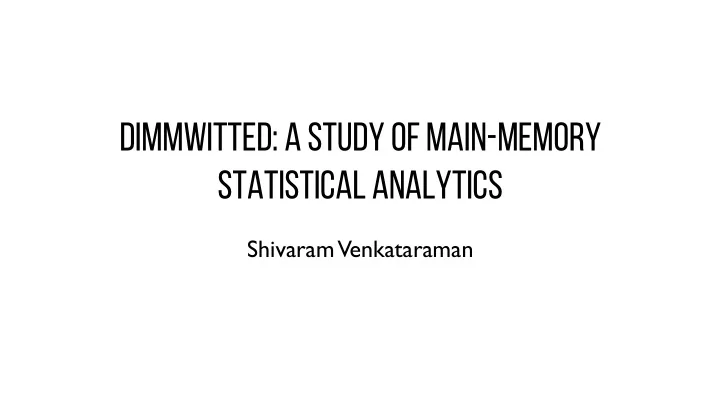

DIMMWITTED: A STUDY OF MAIN-Memory Statistical ANALYTICS Shivaram Venkataraman
MOTIVATION How to best use main memory ? Memory Bandwidth: ~60 GB/s r3.8xlarge on EC2
DESIGN SPACE • Access method – Row vs. Column – Density • Replication – Data – Model
ITERATIVE ALGORITHMS: ACCESS METHOD Sample rows vs. columns Broadly “gradient” vs “coordinate” methods. d d n n
DATA DENSITY: Dense vs. SPARSE d Dense Linear Algebra - More FLOPs / CPU intensive - e.g., Matrix vector multiply: O(n * d) n Sparse Linear Algebra - Lesser FLOPs / communication intensive - e.g., Matrix vector multiply: O(nnz * d)
DIMM WITTED: ACCESS METHODS Data Model
REPLICATION Model - Replica per core ? Similar to Spark, shared nothing - Replica per machine ? Shared memory - Hybrid: Replica per NUMA node Data - Partition per core ? Similar to shared nothing - Replicate data per NUMA node?
DIMM WITTED
OPTIMIZER Inputs Output - f row, f col, f ctr - Execution plan for each CPU - data A ∈ R N × d - subset of data - Initial model vector - model replica - access method to use
ACCESS METHOD - Cost Ratio: how much more expensive writes are - Row-wise is more efficient when writes are cheap - Column-to-row becomes more efficient at some point
MODEL REPLICATION
DATA REPLICATION
TAKEAWAYS - Data access patterns matters but changes based on problem - Model / data replication design space - “Optimizer” for ML
QUESTIONS / DISCUSSION ?
Recommend
More recommend